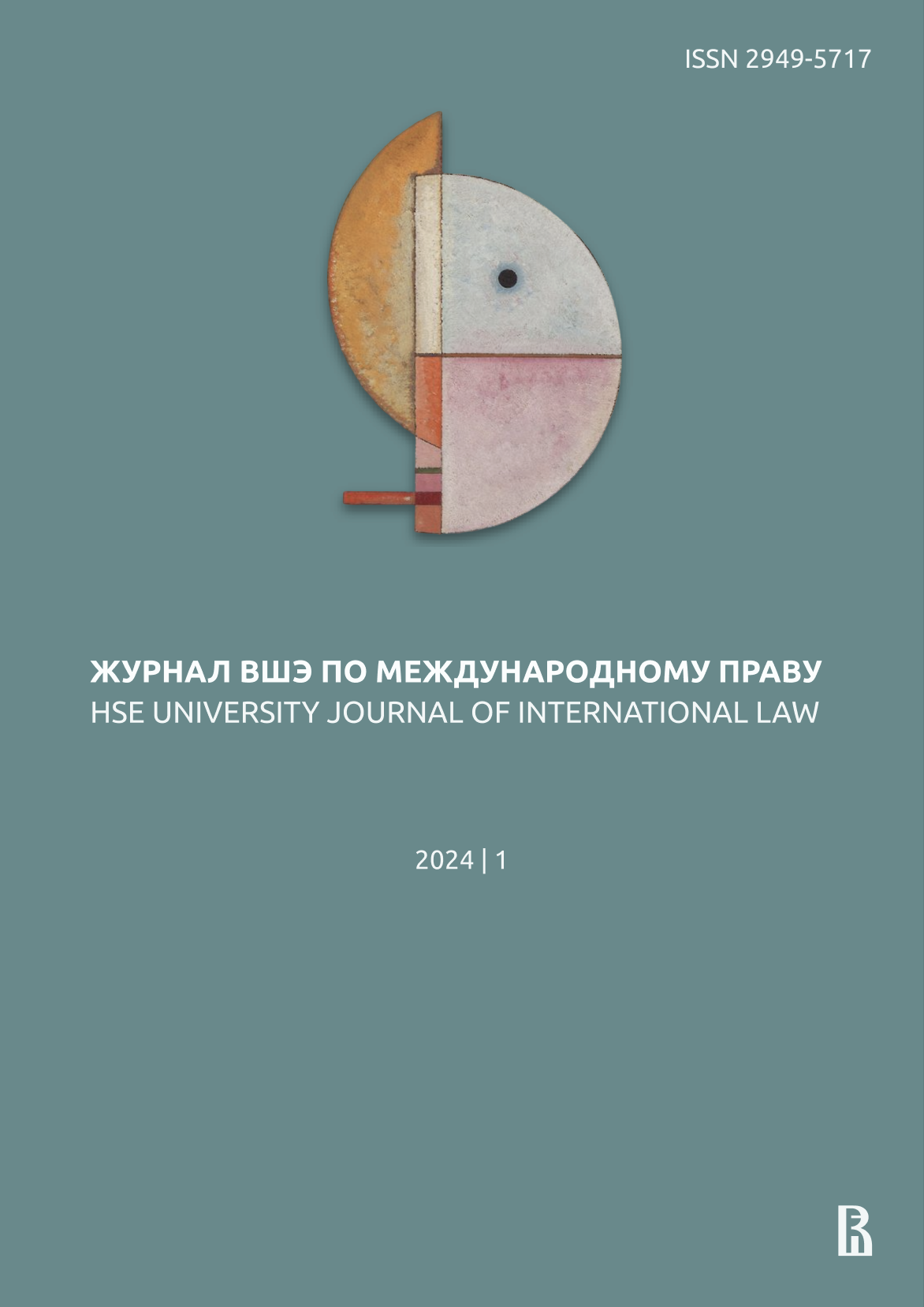Combatant Immunity for Members of the Nagorno-Karabakh Army: A Case Study
Abstract
After Azerbaijan regained control over the territory of the Nagorno-Karabakh region, it detained a number of officials of the Nagorno-Karabakh Republic (hereinafter — NKR) and members of the Nagorno-Karabakh Defence Army (hereinafter — NKDA). The detainees face charges of participating in illegal armed formations and/or terrorism financing. The present case study explores whether the detainees might benefit from combatant immunity and whether Azerbaijan’s prosecution of those who fought for the NKR complies with international humanitarian law. Referencing the rules on prisoner of war status specified in Article 4(2) of the Third Geneva Convention, this paper concludes that members of the NKDA indeed fell into the hands of the “enemy”, NKDA prima facie complied with the “four requirements” for irregular armed formations per Article 4(2) and “belonged” to Armenia, that for these purposes can be deemed to have been engaged in an international armed conflict with Azerbaijan. If evidence available to the Azerbaijani authorities supports the view that NKDA members fit the requirements of Article 4(2) of the Third Geneva Convention, members of the NKDA should be treated as prisoners of war and lawful combatants. Therefore, being a member of the NKDA or supporting its activities should not be criminally punishable.
Downloads
References
Bartels R. (2023) The Rright to Participate in Hostilities: Combatant Privilege vs Criminal Responsibility for Members of Organised Armed Groups during International and Domestic Criminal Trials. In: Fortin K., Heffes E. (eds.) Armed Groups and International Law. Cheltenham, UK : Edward Elgar Publishing. P. 64–90. DOI: https://doi.org/10.4337/9781800888340.00010
Bachmann S., Prazauskas M. (2019) The Status of Unrecognized Quasi-States and Their Responsibilities under the Montevideo Convention. The International Lawyer, vol. 52, no. 3, pp. 393–438.
Crawford E. (2010) The Treatment of Combatants and Insurgents under the Law of Armed Conflict. Oxford: Oxford University Press. DOI: https://doi.org/10.1093/acprof:oso/9780199578962.001.0001
Crawford J. (2006) Creation of States. Oxford: Oxford University Press. DOI: https://doi.org/10.1017/s0922156506003803
Hakan Yavuz M., Gunter M. (2023) The Nagorno-Karabakh Conflict: Historical and Political Perspectives. New York: Routledge. DOI: https://doi.org/10.4324/9781003261209
Henckaerts J-M., Doswald-Beck L, Alvermann C., Dörmann K, Rolle B. (2005) Customary International Humanitarian Law. Cambridge University Press. DOI: https://doi.org/10.1017/cbo9780511804700
International Committee of the Red Cross (2021). Commentary on the Third Geneva Convention: Convention (III) Relative to the Treatment of Prisoners of War. Cambridge University Press. DOI: https://doi.org/10.1017/9781108979320
Pictet J. et al. (1986) Commentary on the Additional Protocols of 8 June 1977 to the Geneva Conventions of 12 August 1949. International Committee of the Red Cross. DOI: https://doi.org/10.1017/s0020860400025249
Krüger H. (2010) The Nagorno-Karabakh Conflict: A Legal Analysis. London: Springer. DOI: https://doi.org/10.1007/978-3-642-14393-9
Melnyk A. (2013) Nagorno-Karabakh. Max Planck Encyclopedias of International Law. DOI: https://doi.org/10.1093/law:epil/9780199231690/e2073
Murphy C. (2017) The Conceptual Foundations of Transitional Justice. Cambridge: Cambridge University Press. DOI: https://doi.org/10.1086/698738
Roeben V., Jankovic S. (2021) Validity of Contested Title to Territory in Frozen Conflict Zones: The Case of Nagorno Karabakh with Particular Reference to the 2020 War. Chinese (Taiwan) Yearbook of International Law and Affairs, vol. 39, pp. 73–110. DOI: https://doi.org/10.1163/9789004532069_003
Saul B. (2021) From Conflict to Complementarity: Reconciling International Counterterrorism Law and International Humanitarian Law. International Review of the Red Cross, vol. 103, nos. 916–917, pp. 157–202. DOI: https://doi.org/10.1017/s181638312100031x
Van Poecke T., Verbruggen F., Yperman W. (2021) Terrorist Offences and International Humanitarian Law: The Armed Conflict Exclusion Clause. International Review of the Red Cross, vol. 103, nos. 916–917, pp. 295–324. DOI: https://doi.org/10.1017/s1816383121000321
This work is licensed under CC BY-NC-ND 4.0


